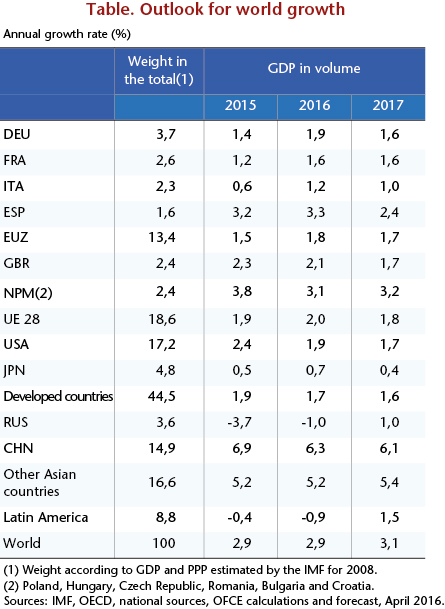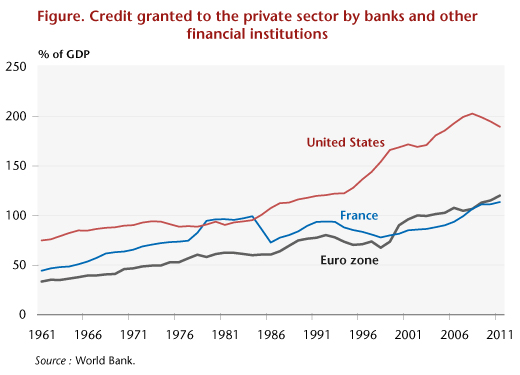By Sarah Guillou
In early July 2013, yet another company in the solar industry, Conergy, declared bankruptcy. The departure of this German company, established in 1998, marks the end of a cycle for the solar industry. This bankruptcy adds to a series of closures and liquidations across every country that have highlighted the rising trade tension over solar panels between the United States and Europe on the one hand and China on the other (see OFCE Note 32: “The twilight of the solar industry, the darling of governments”, from 6 September 2013). As this tension peaked, in May, the European Commission decided to threaten China with a customs duty of over 45%. A trade war has thus concluded a decade of government involvement, as if this were a matter of saving the public money invested. But what it signifies most is the industrial failure of a non-cooperative global energy policy.
A promising, but chaotic, industrial start
Government worship of solar power, which took off in the early 2000s on both sides of the Atlantic, but also in the emerging economies (and especially China), has undoubtedly propelled solar energy to the forefront of renewable energies, but it has also fueled a number of market imbalances and serious industrial turmoil. With the price of oil rising constantly from 2000 to 2010, the need to accelerate the energy transition along with the commitments of the Kyoto Protocol led governments to support the production of renewable energy, with solar energy being the great beneficiary. The global industry experienced a tremendous boom, with growth of more than 600% from 2004 to 2011.
Public support, together with private investment, sparked massive market entries that destabilized the price of the main resource, silicon, the amount of which could not adjust as quickly. Fluctuations in the price of silicon due to imbalances in the market for photovoltaic panels created great instability in its supply, which was exacerbated by technological uncertainties facing companies trying to innovate in the field (such as the American firm, Solyndra, which finally filed for bankruptcy in 2013).
The trade war for a star
The intensification of Chinese domination of the industry has in turn affected the competitive uncertainty. China is now the world’s largest market, and the involvement of the Chinese government in the industry’s development is unparalleled. Today ranked third in terms of installed capacity (after Germany and Italy), China is also the world’s largest producer of solar panels. It now accounts for half of the world’s output of panels, whereas it produced only 6% in 2005. Chinese producers have received massive support from central and local government, which has also helped to saturate the Chinese market.
In addition to this public support, China also enjoys a distinct advantage in labour costs, which makes the business of manufacturing solar panels very competitive – the more technologically-intensive steps are upstream in the industry, at the level of the crystallization and slicing of the silicon. In addition to this competitive advantage, Chinese producers have also been accused of dumping, i.e. selling below the cost of production. Their competitiveness is thus unrivalled … but increasingly under challenge. In October 2012, the United States decided to impose tariffs on imports of Chinese cells and modules, with anti-dumping duties varying from 18.3% to 250% (for new entrants), depending on the company.
Europe, which imports many more photovoltaic components from China than does the United States, initially opted for the approach of imposing anti-dumping duties, and launched an investigation in September 2012, triggered by a complaint from EU ProSun – a trade association of 25 European manufacturers of solar modules – on imports of panels and modules from China. In June 2013, the Commission finally decided to impose a customs duty of 11.2% on solar panels, while threatening to push this up to 47% if China does not change its position on pricing by August 6th.
The Empire counter-attacks
The counter-attack was not long in coming: in July 2013, China decided to apply anti-dumping duties on imports of silicon from the United States and South Korea. A serious threat is also hanging over the head of Europe’s firms, as China is one of the largest markets for the continent’s silicon exporters (870 million dollars in 2011).
This trade war essentially reflects a defensive position taken by China’s industrial rivals in the face of a support policy that they consider disproportionate and unfair, during a period when China has been nibbling away at the industrial jobs of its competitors for ten years. But one could question the industrial logic underlying this trade policy.
First, this policy contradicts previous government policies promoting solar energy. The trade-off between climate change goals (developing low-cost energy transition tools) and the profitability and sustainability of the industry seems to have been decided in favour of the latter. Second, while this now provides producers direct support, it could handicap installers, engineering firms involved in pre-installation work, and manufacturers of panels using Chinese components. Finally, this is leading to serious exposure to potentially costly trade retaliation, which could mean exporters of poly-crystalline silicon or machinery used in the solar industry, or other industries such as wine or luxury cars.
Out of fear of a probable lack of approval by a majority of EU members or in order to “slay other dragons” more freely (the coming telecoms conflict), the agreement reached in late July by Commissioner Karel De Gucht and approved by the European Commission on August 2nd should not lead to trade retaliation nor disturb market supply too much. It commits nearly 90 Chinese producers not to sell below 56 cents per watt of power. This price is a compromise between what is considered consistent with the cost of Chinese production and the current average price on the market on the one hand and what is acceptable to European competitors on the other.
Finally, over the decade from 2002 to 2012 the solar photovoltaic industry has undeniably become global and highly competitive, despite clear-cut government interventionism. In reality, even the governments competed. Now they are settling their disputes by playing with international trade rules. Costly state support has propelled the growth of the sector beyond all expectations: by creating excess supply, the price of solar panels dropped sharply and accelerated the incredible boom in solar power. In 2013, solar power represented more than 2% of the electricity consumed in the European Union. This breakthrough by solar energy was accompanied by numerous entries and exits from the market, without so far giving rise to a significant business concentration. The choice of a public pull-back in favour of trade policy represents a new page in the history of this industry, which is no longer being driven so much by energy policy or even by industrial policy. There is obviously no dusk without a future dawn. But tomorrow’s dawn will certainly see the rise of a different “solar”. Europe’s future in the manufacture of solar panels will involve technological innovation aimed not so much at reducing costs as at improving performance.

